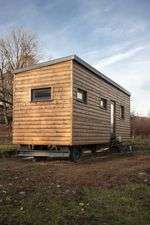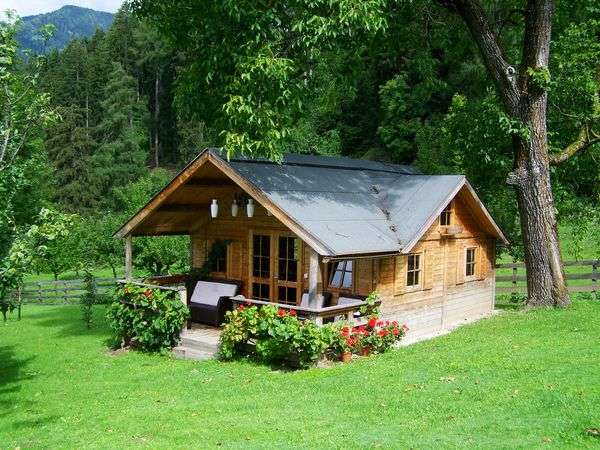When you’re thinking about alternative living options, no doubt tiny houses will be on your radar. This alternative lifestyle is becoming more and more popular as people grow tired of soaring house prices and life-long mortgages. But why live in a tiny house?
This is one of the first questions a person has to ask when contemplating a move. Why do people choose to build and live in tiny houses? What are the benefits? And will those benefits work for your lifestyle?
Today we’re going to outline some of the most common reasons people choose to live in a tiny house.
Affordability
Though there are multiple good reasons to consider living in a tiny house, money has to be the biggest factor that draws people to tiny house living. For years now they have been one of the best ways to escape decades of paying off a mortgage.
And for good reason. Tiny houses are comparatively incredibly cheap to build and live in, so the price tag is a very enticing reason to consider tiny living.
In the U.S, the median existing house price is $284,000, and a whopping $383,000 for newly-built single-family homes specifically. This is a lot of money for the average earner and can be horribly daunting. We know that the average mortgage payment for Americans is $1,275 on a 30-year fixed mortgage. It’s no wonder that many people go into credit card debt just trying to pay off their home.
Now enter tiny houses. For those asking, “why live in a tiny house?” This is often the most compelling answer. Tiny houses can be notoriously cheap, costing as low as $5-10,000 if you can salvage and recycle as much as possible or receive donated materials.
On average tiny homes can cost anywhere between $30,000 – 100,000, though this number relies on many factors. These factors include whether you choose to buy a tiny house or build one yourself, whether you build from scratch or use a kit, and how customized you want the house to be.
But overall, tiny house owners have far less debt than traditional homeowners – 60% of tiny house owners have no credit card debt at all! If you’re looking to escape what may seem like a financial prison of down payments, mortgages and credit card debt, tiny house living could be the right choice for you.
It’s More Customizable

If you’re buying on a modest budget, you’re going to find that your options for conventional 3 or 4 bedroom homes are limited. You likely aren’t going to be able to afford a custom-built home with all the extra features that you’ve dreamed of.
But if you want a house that is customized to your tastes and needs, and you don’t need a lot of space, a tiny home is a great option. Even the higher bracket or tiny homes are not nearly as expensive, and there are plenty of affordable custom-built options.
The most high-end and luxurious tiny houses typically don’t cost any more than $180,000 all up. It’s simply too difficult to spend an exorbitant budget on a tiny home.
Travel-Ready
Why live in a tiny house if you want to move around? Because you can take a tiny house anywhere, within reason. This is another very popular reason for tiny house living. It’s the same reason people buy campervans and motorhomes.
Many tiny houses are built on trailers, or on platforms that can be moved easily by truck. A tiny house built on wheels is particularly useful as you can simply hook it up to your car or truck and hit the road.
This means that if you are renting a plot of land and want to move on, you can do that easily. You can even take your tiny house on the road if you have yet to find a permanent dwelling or temporarily park it on a family member or friends property. Altogether there is much more freedom involved with tiny living.
Maximizes Natural Space
If you’re a nature lover with a small budget, tiny house living can be excellent. Living in a smaller space restricts how much land you can use up. While this can come with its own set of problems, it also means that you’re practically doubling the amount of green space you would otherwise have with a traditional home.
More Eco-Friendly

The philosophy behind many alternative living options is the desire to live in a more environmentally friendly fashion. Tiny house living can help with this.
A smaller living space means it takes far less energy to cool and heat your living space, and considerably less electricity is being used (particularly as solar is the most common form of electricity in tiny homes). Believe it or not, but the average tiny house actually uses 7% of the energy that a traditional home does.
Tiny house living also means less consumption and production of materials, waste and resources. Because the typical tiny house has a minimal fridge and food storage space, tiny owners typically use more fresh food than the average house owner.
Not only that, but the act of “downsizing” also has a lot to do with being more eco-friendly. Downsizing is the term that refers to letting go of a large portion of your belongings, so you can lead a more minimalist life or simply fit your belongings into a smaller house. For the vast majority of new tiny house owners, downsizing is unavoidable. But this often leads to a lifestyle of far less consumption and consumerism, since every purchase you make has to be considered carefully.
In a study conducted by environmental design and planning PhD candidate Maria Saxton, she calculated that the average tiny house owner has a carbon footprint of approximately 3.87 hectares per year, compared to the average 8.4 hectares for traditional homeowners.
Though it’s very possible for tiny houses to be unsustainable, it’s generally agreed that they are much better for the environment overall than traditional housing.
Drawbacks of Tiny House Living
Tiny house living isn’t all sunshine and daisies. When you’re asking yourself “why live in a tiny house?”, you need to consider why you shouldn’t. Here are a few reasons why tiny house living may not be the right choice for you.
Lack Of Storage
Downsizing can be both positive and negative, depending on the person. While downsizing your lifestyle can be conducive to your mindset and also encourage you to live more sustainably, it certainly isn’t for everyone. Some tiny house owners have had to part ways with as much as 80% of their belongings!
And for some of us, this just isn’t doable. If you love shopping, or you’re very attached to all of your belongings, this mode of living may not be for you. And why live in a tiny house if the process of moving in might be too painful?
And it’s not just moving in. You need to adjust to living your everyday life with limited space and storage. You can’t just go on a shopping spree when you want to be cheered up. For everything you buy, you’re going to have to throw something out – or risk overcrowding your small living space.
Financing
This is a big issue for some potential tiny homeowners. While a tiny house costs only a fraction of a traditional home, many people still cannot afford to pay for it straight out of pocket. Getting a loan for a tiny house can be quite difficult, and often getting a standard mortgage loan is impossible. Sadly, despite the low costs, tiny house living isn’t accessible to everyone.
It’s Hard To Entertain

If you’re a social butterfly you might take issue with tiny house living. When it comes to entertaining, your home is going to be a very limited venue. It can be hard to have friends over when you can only fit four or five people comfortably in your living room space. If you’re going to move into a tiny house, you can say goodbye to elaborate dinner parties.
No Room To Grow
Tiny houses can work perfectly for a couple, but they rarely work for families. Unless you’re able to build on to your home, you and your partner will have to put any plans to start a family on hold. And even if you can “upsize” to a home with an extra room, it’s still going to be a squeeze with an extra one or two people in your kitchen and living area.
If you want to have children one day, you may have to accept that a tiny house will be a short-term option until that happens.
Final Thoughts
While this list isn’t exhaustive, hopefully, it helps to answer the question “why live in a tiny house?”, and help you on your own journey. Maybe you’ll decide to make the move and downsize your life, or maybe you’ll decide that conventional home life is the right choice for you.
Either way, making the move to tiny house living is a big choice, and you must do your research. For more info check out the rest of our series on The Most Inspiring DIY Tiny Houses.


